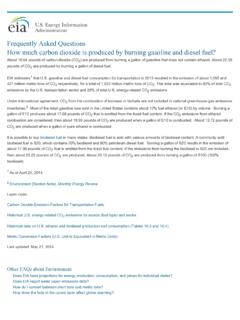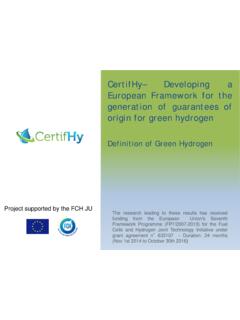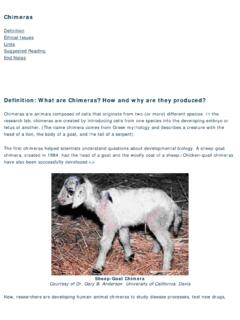Transcription of QUALITY CRIMPING HANDBOOK - Shearwater Research
1 QUALITY CRIMPING HANDBOOK . QUALITY CRIMPING . HANDBOOK . Bringing People & Technology Together, WorldwideSM. Corporate Headquarters : 2222 Wellington Court, Lisle, IL, 60532, , Tel : 630-969-4550. Application Tooling Division : 1150 E. Diehl Rd., Naperville, IL 60563, Tel : 630-969-4550. European Headquarters : Munich, Germany, Tel : 49-89-413092-0. Far East North Headquarters : Kanagawa, Japan, Tel : 81-462-2336. Far East South Headquarters : Jurong Town, Singapore, Tel : 65-268-6868 produced BY THE MOLEX. APPLICATION TOOLING GROUP. Printed in 5M JI 6/96 1996, Molex Incorporated Order Number - 63800-0029 Illustrations by Julie Theis-Pane NOTES Table of Contents Introduction To Crimp Technology.
2 5. Purpose .. 6. Scope .. 7. Definitions .. 9. Associated Materials .. 15. Procedure .. 16. Tool Setup .. 16. Measurement .. 20. Pull Force .. 20. Crimp Height .. 23. Process Control .. 24. Process Capability .. 24. Production ..26. Visual Inspection ..26. Control Charting ..26. Trouble Shooting .. 29. Wire Preparation .. 29. Bellmouth and Cut-Off Tab Length 29. Conductor Brush and Insulation Position 31. Insulation Crimp .. 33. Crimp Height .. 35. Pull Force .. 35. Wire Gauge Chart .. 36. Notes .. 38. 38 3. INTRODUCTION TO. Wire Gauge Chart CRIMP TECHNOLOGY. AWG WIRE AREA STRANDING WIRE DIAMETER CIRCULAR WIRE BREAK. sq. inch sq. mm # dia. inch mm MILLS lbs.
3 N. 8 1 16384 Developed to replace the need to solder terminations, CRIMPING technology provides a high QUALITY connection between a terminal and a wire at a relative- 8 19 15433 ly low applied cost. The methods for applying crimp terminations depend on 8 49 15700 the application and volume, and range from hand-held devices to fully-auto- 8 133 16983 mated systems. The application methods include a basic hand tool, a press and die set, a stripper crimper or a fully automatic wire processing system. But no 8 168 16800 matter what method is used, the setup of each tool is critical for achieving a 8 665 16625 QUALITY crimp. 10 1 10384 Today, many OEM companies are using Statistical Process Control (SPC) to 10 37 9354 continuously improve their crimp terminations.
4 Crimp termination is a com- plex process and to ensure consistent QUALITY it is necessary to understand the 10 49 9880 variability and inter-relational interactions that the technology involves. 10 105 10500 Without a thorough understanding of the CRIMPING process and all the factors 12 1 6529 that can affect it, the end result may not meet expectations. The three key ele- ments in the CRIMPING process are the terminal, the wire and the tooling. 12 7 7168 12 19 6088 Terminal For most applications, it is not economically practical for connector manufac- 12 65 6500 turers to design a terminal to accept one wire size, one wire stranding, and one 12 165 6549 insulation diameter (UL type).
5 Most terminals accommodate many wire sizes, 14 1 4109 stranding, and a range of insulation diameters so the terminals are designed to meet acceptable levels over this entire range. 14 7 4481 Wire 14 19 3831 The wire stranding and insulation type can vary widely within one wire size. 14 41 4100 For example, there is more than 18% more material in an 18 AWG x 19 strand 14 105 4167 wire than an 18 AWG x 16 strand. The insulation diameter of an 18 AWG wire can range from .070" (1,78 mm) to over .180" (4,57 mm). Wire strands can 16 1 2581 be copper, tinned, overcoated, or topcoated. Wire insulation materials, thick- 16 7 2828 ness, and durometers vary from application to application.
6 16 19 2426 Tooling 16 26 2600 What type of tooling does the application require? Does the application require hand stripping of the wire or does the volume dictate an automatic 16 65 2580 wire stripping machine? Does the application and volume require hand tools, 16 105 2625 press and die, or fully automatic wire process machines? CRIMPING with a 18 1 1624 manual hand tool, semi-automatic press and die, or fully automatic wire processor, all involve different levels of variability. The terminal, wire, and 18 7 1770 type of application tooling all affect the QUALITY of the completed terminations. 18 16 1600 18 19 1900 36 5. PURPOSE TROUBLE SHOOTING. CRIMP HEIGHT.
7 Problem Cause Solution This HANDBOOK provides general guidelines and procedures for understanding Changed wire type, vendor, or stranding and achieving acceptable crimp terminations. A Glossary in Chapter 3 lists Changed insulation color or common terms and definitions. Chapter 4 lists the tools that are necessary to durometer take accurate measurements and evaluate the crimp's acceptability. Changed crimp tooling Changed crimp press The tooling setup is critical in determining the QUALITY of the finished crimp. Crimp height off target (shut height). Adjust tooling back to target The attributes that need to be considered include crimp height, conductor (Fig.)
8 42) Changed press type (manufacturer). brush, bellmouth, cut-off tab, strip length and insulation position. Variability Changed terminal reel in one or more of these attributes can reduce the measured pull force. It can (lot code). be difficult to establish acceptable variability limits because the attributes all Changed tooling set-up interact with one another. For example, a track adjustment for bellmouth also Damaged or worn tooling will change the cut-off tab length and the insulation wire position while strip length and wire locations affect the conductor brush and insulation position. Wire variability Adjusting the insulation crimp height may result in a slight change to the Inspect incoming product.
9 Conductor crimp height measurement. It may be necessary for the setup per- Terminal variability son to make multiple adjustments before establishing an optimal setup. The Damaged, loose, or worn Tooling replacement or order the setup is done may help reduce the number of repetitions required Crimp height variability to high tooling tightening for an optimum setup. Chapter 5 has a flowchart for a process setup while (Fig. 43). Measurement error Gage capability analysis Chapter 7 is a trouble shooting guide for common problems. Using Statistical Process Control (SPC) during the CRIMPING process can help minimize the Terminal spring back too great, Crimp height adjustment over CRIMPING Parts per Million (PPM) reject levels.
10 Chapter 6 provides a general explana- Cut or missing wire strands Stripping process adjustment tion of the benefits of using SPC. This HANDBOOK is structured so that parts, or all, of its contents can be used as PULL FORCE. a procedural guide for ISO requirements. Problem Cause Solution Cut or nicked strands Check the stripping process Crimp height too low Adjust crimp height Wire breaks before conductor crimp - low pull force (Fig. 45). Small or no bellmouth Adjust tooling track Insulation crimp through Raise insulation crimp height insulation wall Crimp height too high Adjust crimp height Small or no conductor brush Increase strip length Conductor bellmouth too big Adjust tooling track Wire pulls out of conductor grip - low pull force (Fig.)













